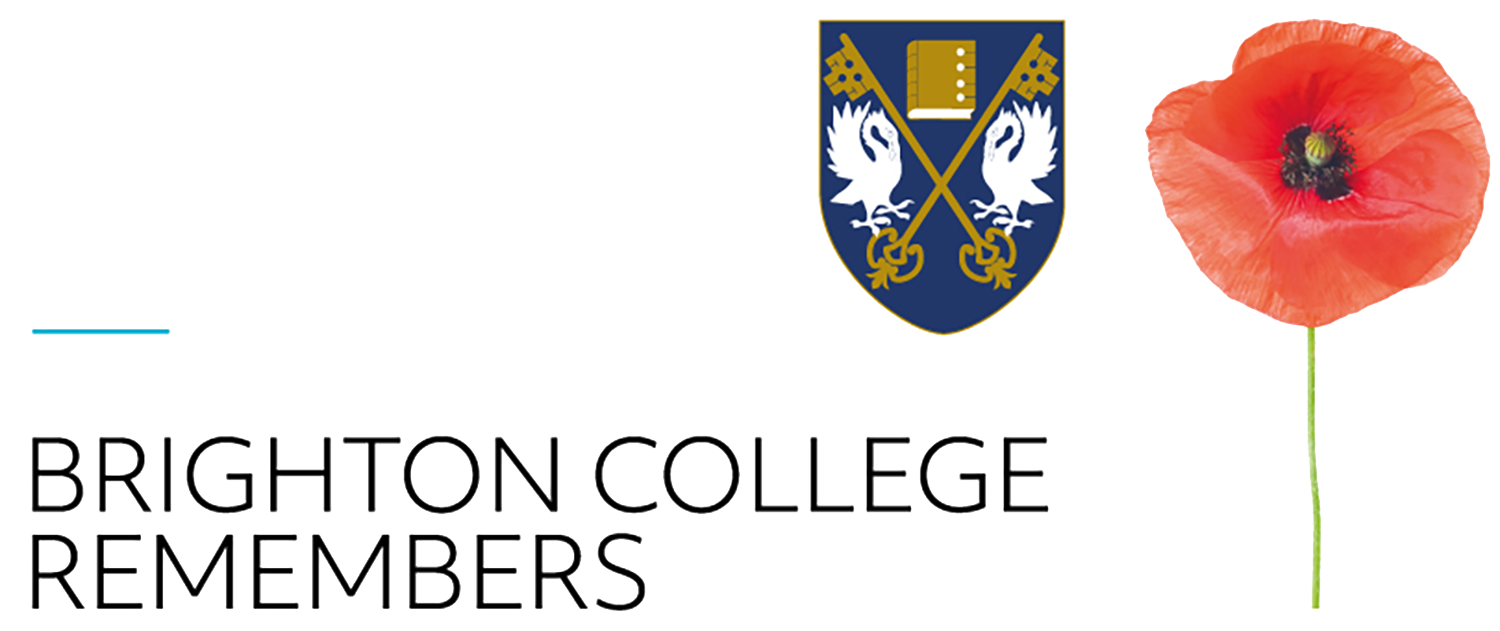Captain, Northumberland Fusiliers, attached Royal Flying Corps.
Born: January 10th 1892
Died: September 15th 1916
Age at Death: 24
Keble College, Oxford. Modern History.
A member of the University Contingent of the Officers' Traning Corps. Commenced service September 1916. Killed in aerial action, France, September 15th 1916.
Son of Alexander Glenday of Molyneux Park, Tunbridge Wells. Brother to Roy Goncalvez Glenday (Ha.1898-1903), V. Goncalvez Glenday (BC reg. 3006) and Alexander Goncalvez Glenday (Ha. 1898-1904).
Grave reference Beauval Communal Cemetery, Somme, France.
A donation has been made to the memorial statue in honour of this solider by an Abraham House leaver 2016.
The story of his death is told in Alan Bott's "An Airman's Outings".
Captain Ferdinand Goncalvez Glenday
Ferdinand Glenday was born on 9th January 1892 in Aston, Warwickshire. His parents were Alexander Glenday, an import export merchant, and his wife Marie Louise Baptista Lopes Glenday. Marie was evidently of Spanish extraction, which perhaps accounts for both Ferndinand Glenday’s intriguingly exotic middle name and the size of the family. He had four older brothers and one younger sister but his mother died very young aged just 31 when he was only five. In the year before Ferdinand was born the family is listed as living at Four Oaks Farm, Sutton Coldfield Warwickshire but they evidently moved South shortly afterwards because Marie Glenday’s death was registered in Tunbridge Wells.
In 1903, when Ferdinand was only 11, his father also died and he and his siblings were taken in by his uncle, the Revd. Edward Albert Glenday, who, from the following year, was Rector of Holy Trinity Church in Bury, Lancashire. Prior to that, however, Ferdinand Glenday was a pupil at Brighton College from 1900 to 1903 when he was apparently in Hampden House.[1] After the family moved to the North he became a pupil at the prestigious Manchester Grammar School and from there went up to Keble College, Oxford in 1911 to read Modern History.
Following the outbreak of war he received a commission in 12th battalion Northumberland Fusiliers and was apparently rapidly promoted to Captain. In the regimental histories he is referred to as ‘Uncle Glenday’, which gives some idea of his character as perceived by others. He fought with the battalion and was wounded at the Battle of Loos after which, like many other officers in search of a more glamorous and interesting life than the slog of the trenches, he transferred to the Royal Flying Corps.
On 15September 1916 he was flying as an observer in a Sopwith 1½ Strutter A1913 ( a two man plane), with Capt C K Cochran-Patrick as pilot, when he was killed in action on 15 September 1916. Capt Cochran-Patrick was unhurt. A patrol from No 70 Sqn, then based at Fienvillers aerodrome, was on an Offensive Patrol over Bapaume when they met a formation from Jasta 2 (an elite German fighter unit. The action is vividly described in ‘an Airman’s Outings’ by Alan Bott:
Two observers, other than C.'s passenger [C was the pilot of the only Sutter actually shot down in the action], had been killed during our patrol. One of them was " Uncle," a captain in the Northumberland Fusiliers.[2] A bullet entered the large artery of his thigh. He bled profusely and lost consciousness in the middle of a fight with two Huns. When he came to, a few minutes later, he grabbed his gun and opened fire on an enemy. After about forty shots the chatter of the gun ceased, and through the speaking-tube a faint voice told the pilot to look round. The pilot did so, and saw a Maltese-crossed biplane falling in flames. But Uncle had faded into unconsciousness again, and he never came back. It is more than possible that if he had put a tourniquet round his thigh, instead of continuing the fight, he might have lived.[3]
It is clear that that Glenday, in effect, sacrificed any chance he might have had of saving his life in order to shoot down the enemy plane and thereby guarantee the safety of his pilot. Glenday was then buried in Beauval Cemetery, Somme, France. It must have been an exceptionally sad time for the family because his elder brother Alexander had been killed at a year earlier at Loos in August 1915. One of his other brothers, Vincent, went on to become a colonial district commissioner and then Speaker of the East African Legislative Assembly, his portrait now hangs in the National Portrait Gallery.
[1] This seems slightly unlikely because of his age, it may in fact be the case that one of his brothers was in Hampden House and Ferdinand was a member of Junior House.
[2] Glenday had obviously retained the affectionate nickname he had been given in the infantry while he served as an observer with the Royal Flying Corps.
[3] Bott, Alan, An Airman’s Outings, (London 1918), 62.
Source: LEST WE FORGET PROJECT, Brighton College 2014/15
From The Manchester Grammar School Magazine October 1916
Capt. Ferdinand G. Glenday came to us from Brighton College for quite a short time in 1904. After losing his father, he came to live with his uncle, the vicar of Holy Trinity, Bury. The aboriginal campers at Alderley will remember him well.
He was the liveliest of comrades in the day-time, and a sepulchral cougher at night.
He went from us to St. Bees, and his headmaster writes of him: "His loyalty, his kindness, his sincere desire for goodness and the happiness of his brother-men—these were very well-known qualities."
He went to Keble College, Oxford, and took honours in Modern History in 1914. He had been previously wounded, and was 24 years of age.
His elder brother was killed in France last year.


